1926 Renault OS discovered 45 years ago, then restored
Posted by Chris Graham on 20th December 2023
Zack Stiling tells the story of a 1926 Renault OS bétaillère, found 45 years ago, that’s become a stalwart of the British preservation scene.
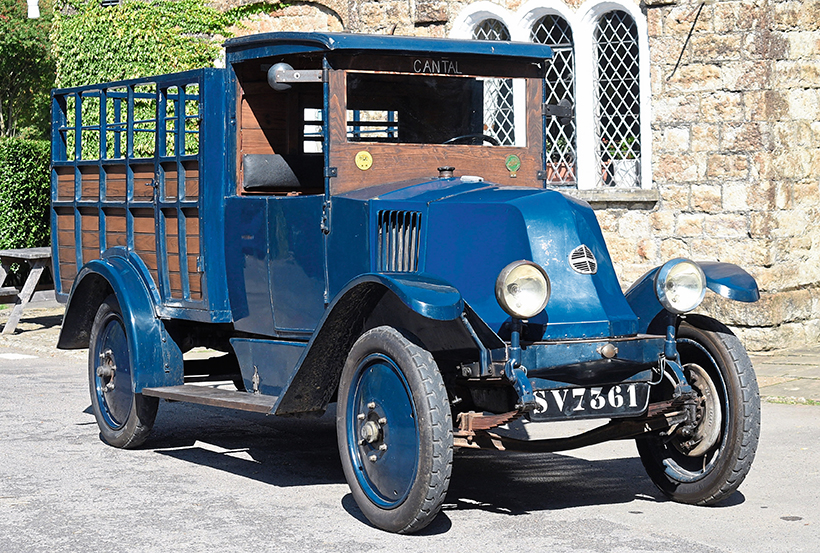
1926 Renault OS: This rare Renault has had just two owners in 97 years. It’s almost certainly the only one in Britain.
At any British commercial vehicle rally, one can expect to see a rich array of historic vehicles, but almost all will be British-made. This hardly requires any explanation – with such a strong lorry-building industry of our own, there has been little cause for importing foreign products – but it does mean one generally has to book a trip to the Continent if ever one wishes to see foreign marques. There are exceptions to the rule, though, such as this delightful 1926 Renault OS bétaillère which has had just two owners in its 97-year life, the last 45 of which have been spent in rural Kent.
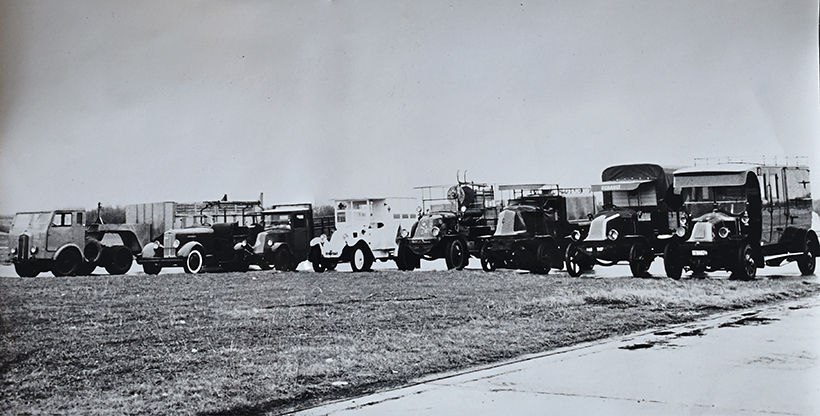
This shows the breadth of Renault’s commercial line in the late 1920s.
It would be misleading to say that it was imported in 1978 by vintage vehicle enthusiast Ian Macdonald because he was not really an enthusiast when he bought it. He was interested in mechanical things to the same extent that many men are but, at 38 years old, he had never actively sought an historic vehicle. That all changed with a holiday to France.
“I wasn’t looking for it,” he says. “I was on a perambulation in a remote part of France and there, in this open barn, was the truck. There was nobody there, so I walked around, had a look and went away, and a few days later some friends from the UK came down and had a look. There was a little cottage there, an elderly couple came out and the first thing they said was ‘It’s for sale.’ The husband of the couple was the original owner, in his eighties. I’d seen it had a crack in the block, but almost everything was there down to the agricultural wheels with blades for muddy fields.”
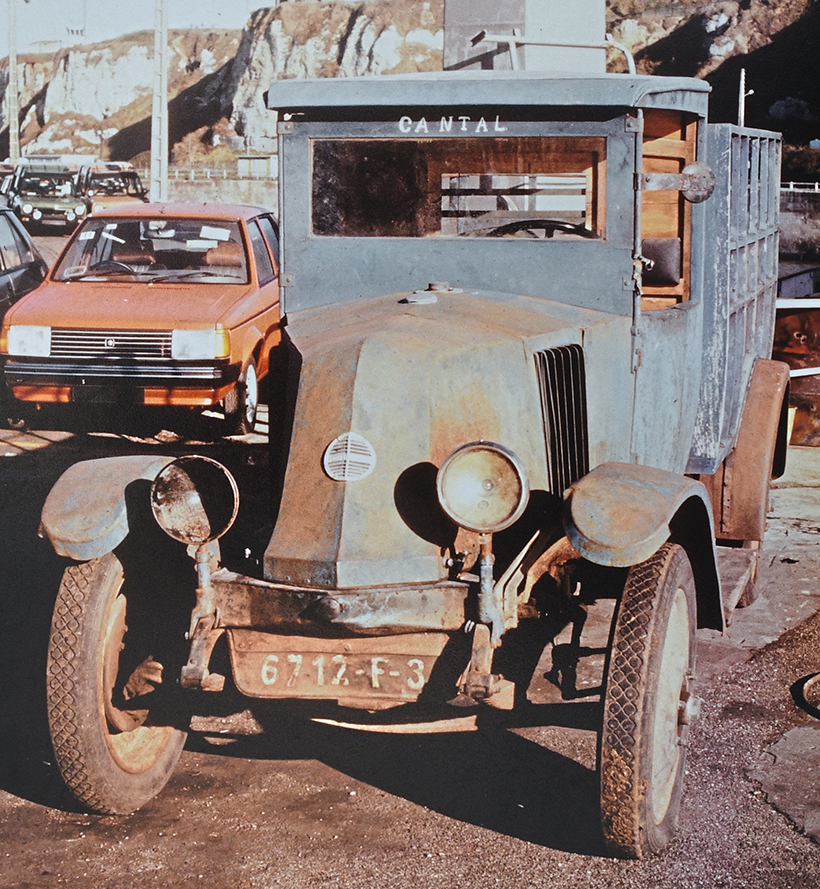
By 1978, almost 40 years in a French barn had made the OS very scruffy.
After going away and thinking about it some more, he decided it would make a nice project. “I had to think how to get it back. First of all was the deal. I knew a French girl who lived nearby and she was the go-between.”
The lorry, which was in Cantal, a department of Auvergne, had broken down during the Second World War, and the engine had either frozen or been run without water, resulting in the cracked block. It was then left in an old stone barn until about a week before Ian went walking in the area, when the owner’s son pushed it into the open in the hope of attracting a buyer.
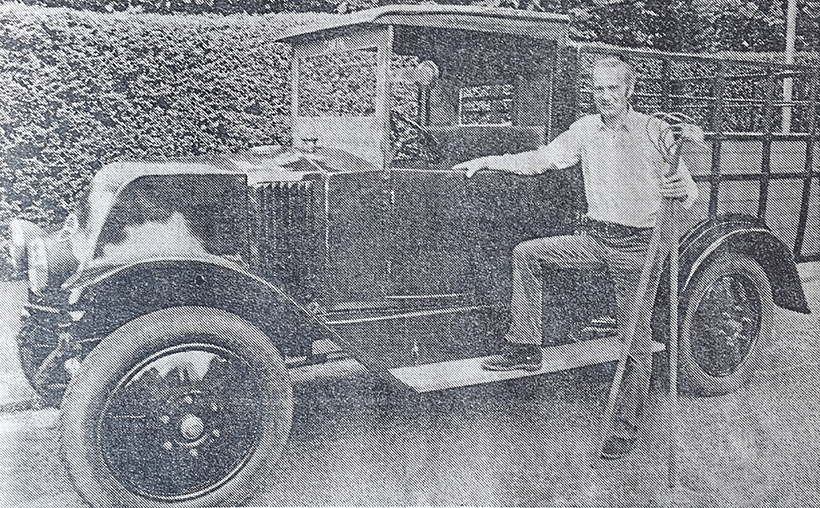
Ian stands proudly with the lorry following its restoration.
Rather than transporting it by rail, Europ Assistance would transport it all the way to the ferry at Dieppe for the very reasonable price of £100, or about 1000 francs, and then it just had to be delivered from the English port to the farm in Kent where storage for it had been arranged. The nerve-wracking part of the journey was being told to drive it down the ramp onto the ferry, which was filled up with new Peugeots and the like, as there had not yet been any opportunity to properly test the brakes. It later transpired that one of the brakes was being operated by just a single strand of cable, but they held out long enough. “I got it back to the farm in Sundridge and put it in an open-ended Nissen hut,” Ian says. “Fortunately the farmer was an engineer and into Bentleys.”
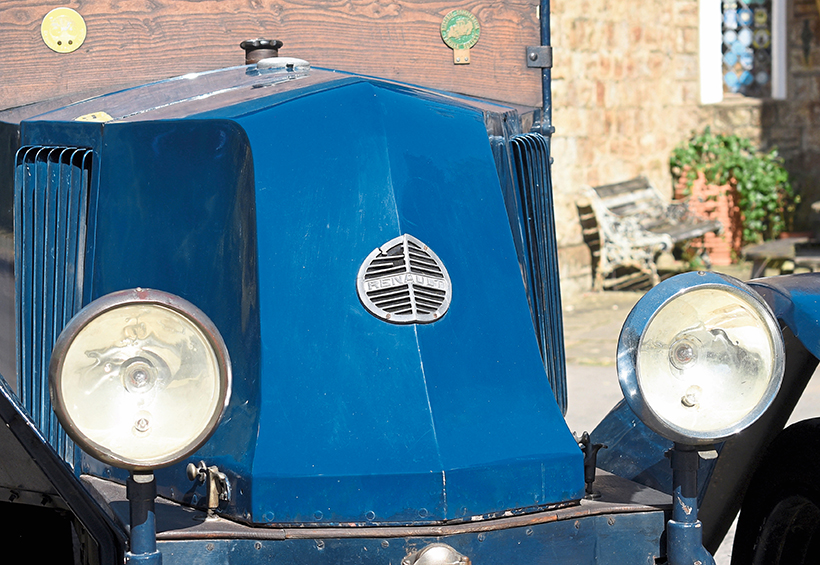
The famous coal-scuttle bonnet is a hallmark of vintage Renaults.
Then a resident of Croydon, his restoration efforts were rewarded with a front-page story in the local Advertiser, which told an entirely made-up story of how a set of spark plugs and a new magneto were all that was required to get the Renault running again. In fact, the engine had to be completely rebuilt, with the aforementioned crack being repaired, although the internals were mostly intact and could be reused. The brakes, of course, had to be completely overhauled, too. “The gearbox jumped out of first,” he adds, “but that wasn’t a problem because you never use first.”
The only missing parts were the magneto and horn. “Ron Westall, who did the white-metalling, had a house in the Dordogne. He went to a market and the first thing he saw was a junk stall with exactly the right horn on it for a fiver.”
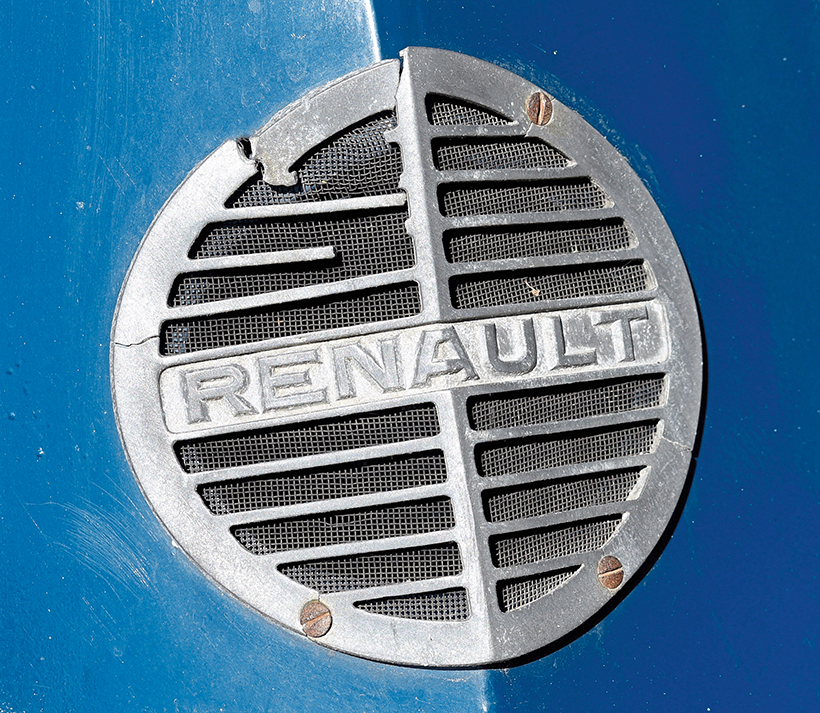
The round badge was leftover 1925 stock, as in 1926 Renault adopted its distinctive diamond.
The Renault’s original body was well-preserved but, says Ian, “The mistake I made was to paint her, but she did need it. It’s the same colour as it was, French blue, or as near as I could get to French blue over here. I was doing it out in a field with horses, with dust and hay, so painting it was difficult.” The bonnet was later repainted in a complementary shade after it was removed for some engine work and, while neatly stored, a stone wall collapsed next to the wall of the barn, taking part of the barn with it and doing some damage to the bonnet. One of the Ducellier headlamps was missing its bezel, but a bezel from a Rover P5 was found to be a perfect fit.
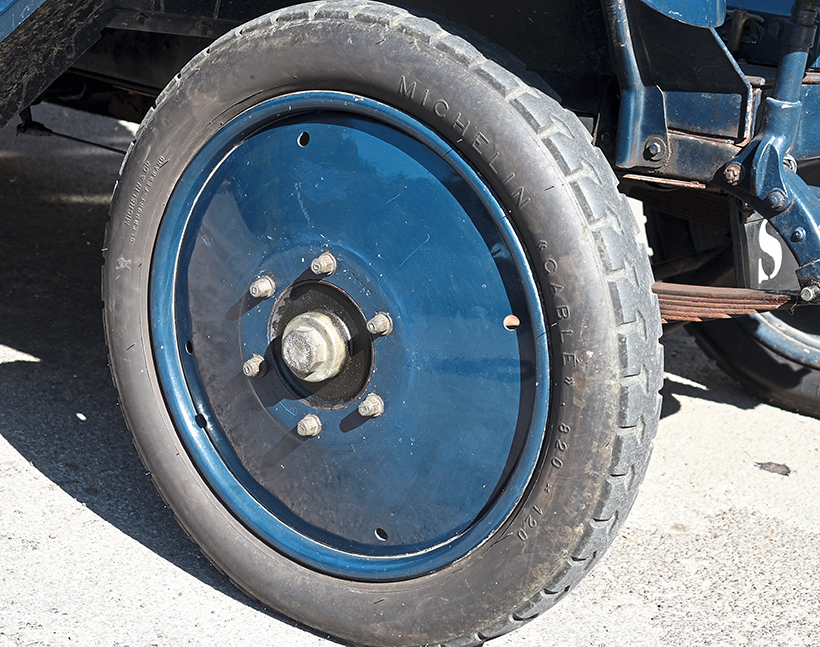
Solid disc wheels were suitably tough for agricultural use.
Once the restoration was completed, the Renault was sent out onto the rally circuit and, over several decades and thousands of miles, it proved a to be a very dependable old machine. Ian joined the Historic Commercial Vehicle Society and entered the Renault in the 1980 London to Brighton Run, which was to be the first of many it completed. In those days, Renault was very helpful and enthusiastic about supporting owners of its historic vehicles, and Tony Ronald, who was the Press and PR Manager for Renault UK, did everything he could to uncover information about its old lorries and generally make living with the OS as easy as possible. The two of them, with John Kemsley and George Dorrington, established Renault Frères, the club for pre-1940 Renaults, in 1984, and the OS has since been on many Continental rallies with them to France, Belgium and Holland.
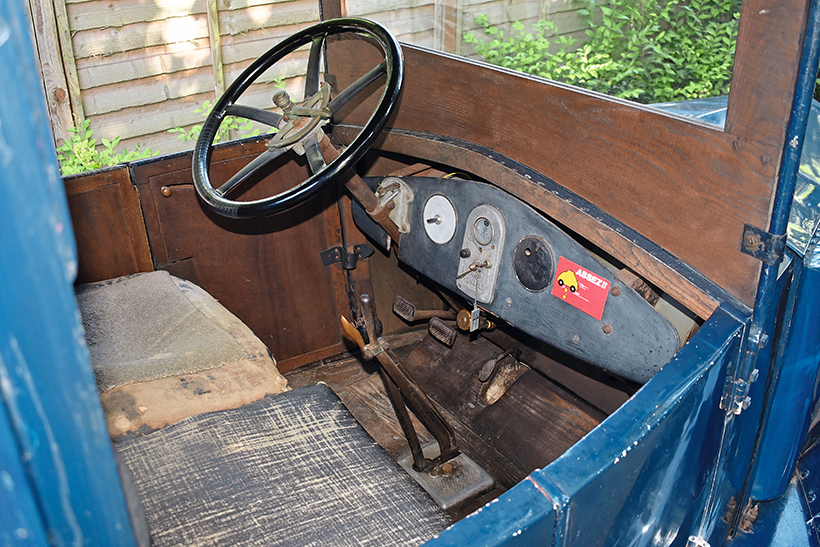
The interior is typically spartan.
Finding himself enjoying the OS, Ian has since also bought a 1912 Renault AX and a 1900 De Dion Bouton 3½hp vis-à-vis, and it is partly on account of those somewhat diverting stablemates that the OS has seen little use since 2010. However, it has just been recommissioned and I am taken for a pleasant spin around the village, where one imagines the old workhorse must feel very much at home among the Kentish fruit farms and rows of hops, which are a more than adequate substitute for the French vines.
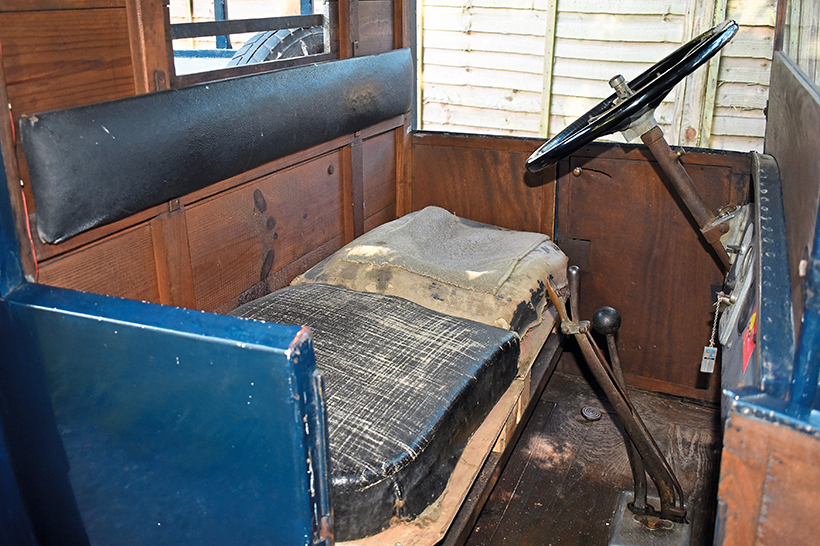
The seat cushions are well-worn but perfectly comfortable.
On the road, Ian explains, “The ride is a commercial vehicle ride. It’s designed for heavy loads so with just two people in it the suspension is stiffer. You don’t notice it on smooth French roads, but you do on potholed English ones. It’s got plenty of brakes. They’re on four wheels, so they’re perfectly adequate. The steering is heavy but it’s fine, and the gear-changing is fine once you get used to it. To all intents and purposes it’s a modern vehicle, with a four-cylinder engine, three speeds and reverse, whereas the AX and De Dion are completely different. It’ll do 30-35mph but I’ve never really driven it flat out because you just don’t do that with an old vehicle.”

A cut-out had to be made to allow the accelerator to reach its full travel.
In all its time over here, the Renault is believed to have been the only example of its kind in Britain. One expects the OS to be more numerous in France, but even over there it must be something of a rarity, as evidenced by the fact that one historian, the author of a history of Renault lorries who encountered this example at a rally, was aghast to learn of its existence as he had completely overlooked it when writing his book.
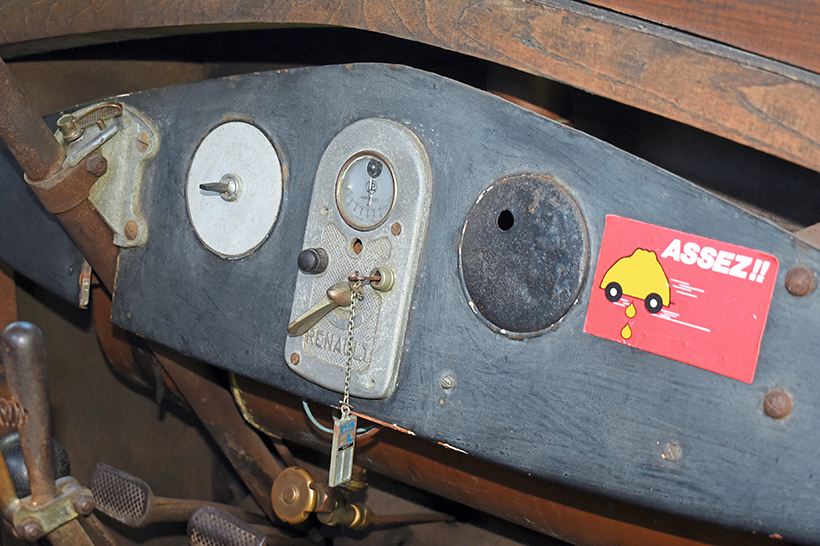
The only gauge on the dash panel is an ammeter.
On the subject of books, information on early Renault lorries is not easy to come by, which is a pity because the story is an interesting one. Commercial-bodied Renaults were in existence as least as early as 1900, the marque itself having only been established the previous year. These early commercials were simply cars with light van or pick-up bodies, but fully purpose-built commercial chassis were added to the range in the late 1900s, with payloads ranging from 14cwt to 3½ tons. Various bodies were offered, from straightforward delivery vans to covered flatbeds.
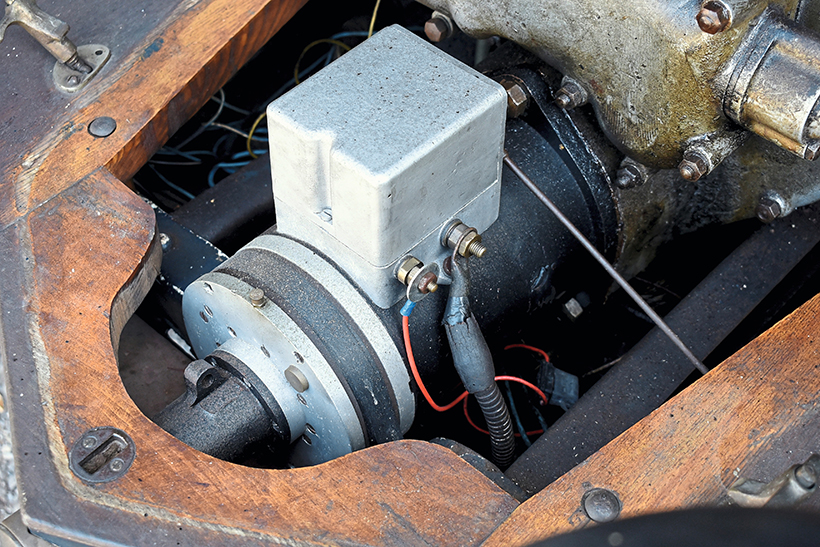
Many vintage Renaults used a Dynastart.
While the 1914-1918 war was devastating for all the great European nations caught up in it, it was not without its advantages for lorry-makers, and Renault was among those which benefitted to some extent from military contracts. It was already producing lorries and gun tractors for the French military by 1911, and production of military chassis reached some 300 per month during the war. Tests undertaken by the France’s Ministry of War rated Renault’s tractors superior to Berliet’s and Latil’s and, come the Armistice, Renault’s reputation for trusty, durable commercial chassis was secured. It moved into the 1920s with quite a vast array of different chassis and engines, from one to 7½ tons, the largest being powered by a 7.9-litre four-cylinder engine, with increasingly specialised applications.
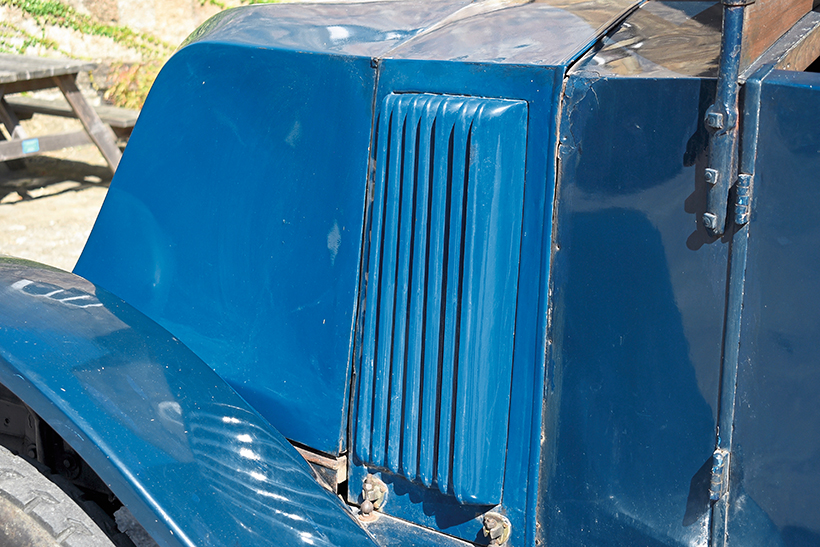
Vents provide airflow for the scuttle-mounted radiator.
The 10hp OS type arrived in 1925 with a payload of 1-1½ tons. From 1926, one of the most interesting applications for the OS chassis was as a dumper truck with hydraulic cylinders tilting the bed, but what is impressive is the effort that has gone into making it attractive. The featured OS wears what is known in France as a bétaillère body, which in the English-speaking world would be a cattle truck or livestock transporter. While it scarcely looks big enough or strong enough to contain a fully-grown bullock, there are some rings to the rear to the cab which might have been ideal for tethering smaller animals such as goats or sheep. Considering that it was destined from the outset for rough use around a farm, it was hardly necessary to shape the timbers used for the body frame but the body-builders did it anyway. We can only conclude that the workers of old took a pride in their labour that the minds behind the robot production lines of today will never understand or appreciate.
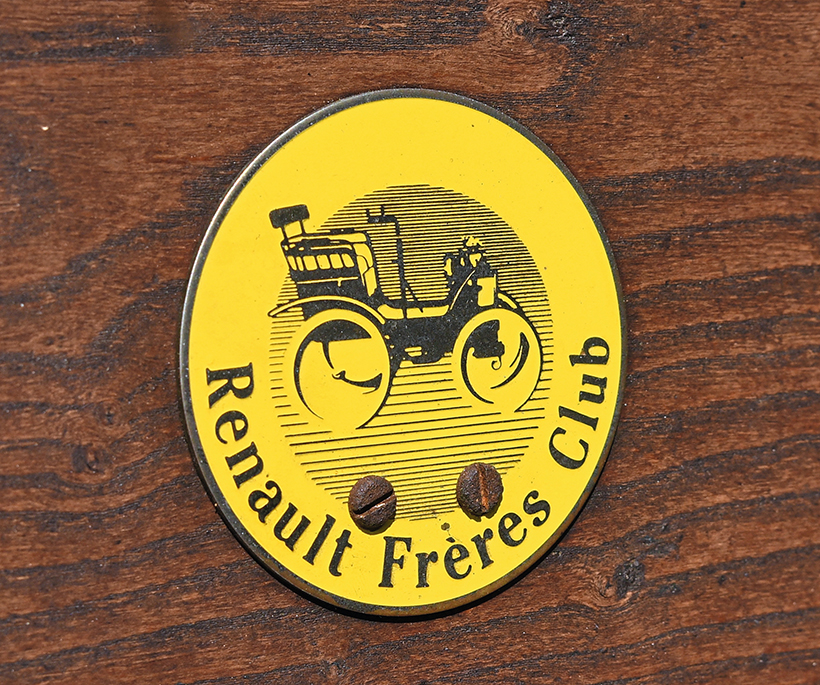
Owner Ian Macdonald was a founder member of the Renault Frères Club
Another interesting detail is the bonnet badge. The famous Renault diamond was not introduced until the end of 1925, prior to which the badges were simple circles. The 1920s, of course, was a time when nothing was thrown away unnecessarily, and since there was still a stock of left over circle badges to be used up, they continued to be used on commercial vehicles for some time after the passenger cars started using the elegant new diamonds.
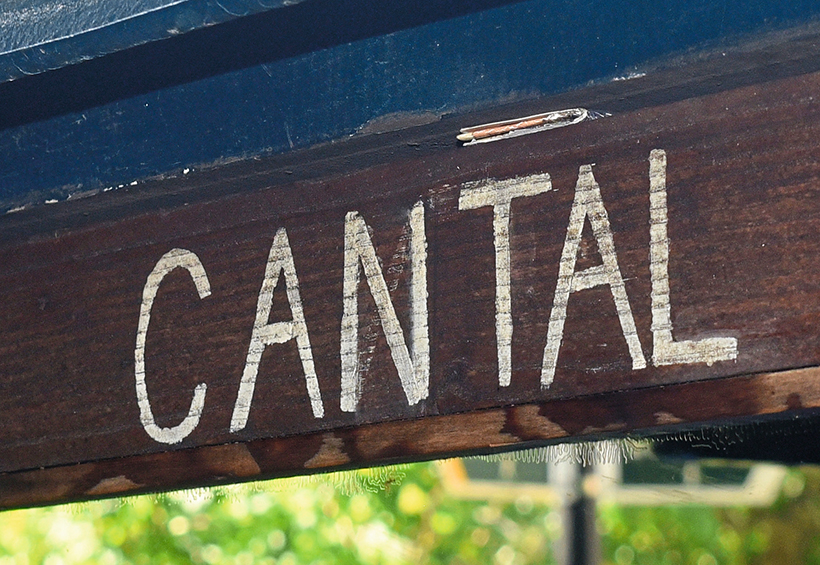
The ‘Cantal’ markings were on the Renault when it was discovered.
Sadly, it has been decided that the Renault will now be offered for sale on account of the lack of use it has seen in the last 13 years, with the AX and De Dion, which are rather more manageable in modern traffic, being used in its stead. It is always a shame to part with a vehicle when one has restored it, driven it all over the place and cherished it for over four decades, but hopefully the OS will find an enthusiastic owner who will put it back on the rally circuit once more. After giving faithful service both as a working vehicle and as an historic preservation piece, it well deserves to be seen by a new crowd of admirers.

Ian has now cared for the Renault for 45 years.
The sale of the Renault is being handled by Geoff Crabtree. Enquiries should be made to Geoff by calling 07836 383450, or emailing: crabtree@bicknorpark.co.uk
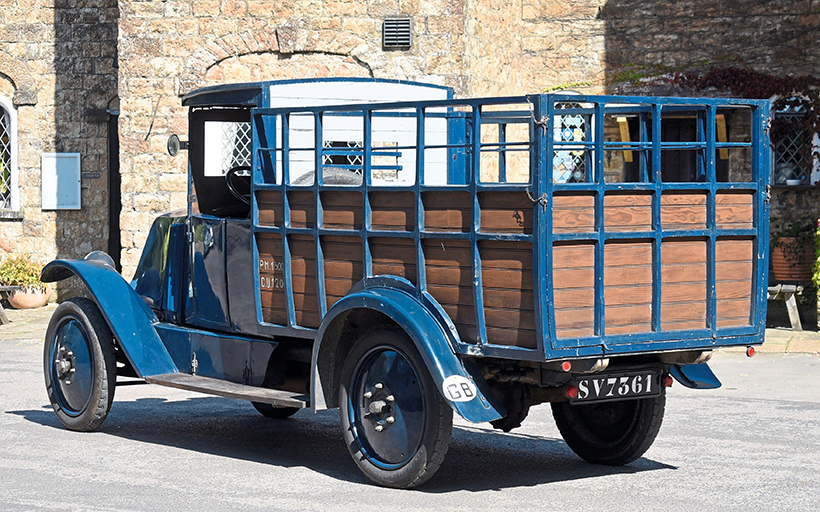
The wooden bétaillère body looks suitably rustic.
This feature comes from a recent issue of Old Glory, and you can get a money-saving subscription to this magazine simply by clicking HERE
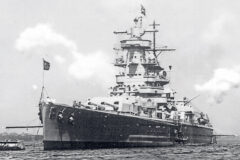
Previous Post
Life and times of the pocket battleship Admiral Graf von Spee
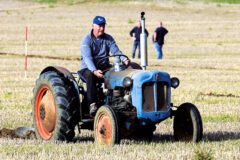
Next Post
1959 Fordson Dexta and novice ploughman earn their stripes!



